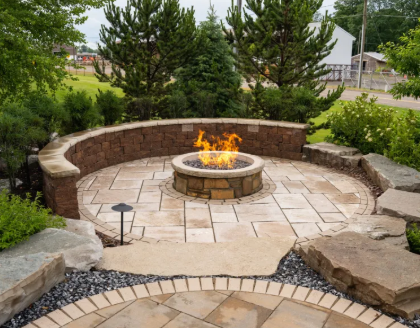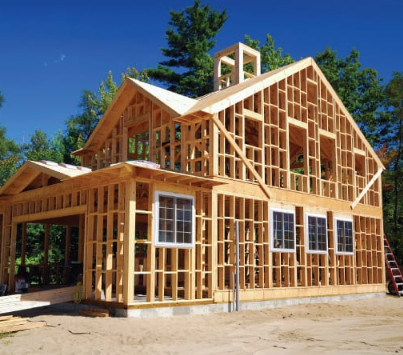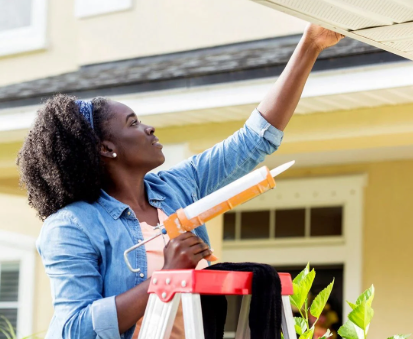Protecting your home and loved ones starts with the right security system. Home security is easier and smarter than ever nowadays.
The perfect home security systems can include a variety of devices—from motion sensors to security cameras and monitoring services. When narrowing down the options to find the right system for your needs, there are several key questions to consider.
What features do you need? What's your budget? Do you prefer working with a professional security company or installing it yourself? This guide will walk you through different types of home security systems, their components, technologies, installation methods, and monitoring options.
Assessing Your Home Security Needs
Whether you're going with a professional company or a DIY home security setup, the first step to getting the right system is understanding your specific needs. Start by taking a close look around your home.
Are there entry points that need monitoring?
Do you need both indoor and outdoor security cameras?
How many motion sensors would make you feel safe?
How many door and window sensors do you need for peace of mind?
Are there any safety risks, like tall bushes or dark areas where intruders could hide?
Is your outdoor lighting sufficient?
Would your ideal system include special features like pool alarms, glass-break detectors, or sirens?
Do you worry about personal safety when you leave the house?
Do you travel often? Would professional monitoring be a better fit?
Smart Home Security Systems
If your idea of the perfect system includes everything from locking doors to adjusting your thermostat remotely, consider a smart home security system. These systems connect to your Wi-Fi and let you control and monitor devices through an app on your smartphone.
Many brands offer smart home security kits with accessories that make choosing, installing, and managing your system relatively easy and affordable.
Professional Home Security Services
Professional security companies take a full-service approach to choosing, installing, and monitoring top-tier home security systems. If a break-in or emergency occurs, they’ll notify the authorities 24/7.
This is a good option if you want full protection and hands-off convenience. Some companies offer free in-home consultations, while others provide phone consultations at no charge. Keep in mind: the more complex your needs, the more investment may be required.
Tip: Even if you don’t install a full system, some companies offer monthly monitoring services for added peace of mind.
Wired vs. Wireless Security Systems
Whether you go DIY or full-service, it’s important to understand the difference between wired and wireless security systems.
Wired systems are physically connected to your home's electrical wiring.
Wireless systems use signal-based connections and can be moved or reconfigured as needed.
Note: "Wireless" refers to how sensors send signals. More systems still need a power source for the control panel.
Wired systems are suited for homes under renovation. They can be integrated into structured wiring, with cables running through the walls to connect sensors to the control panel.
Wireless systems are ideal for finished homes. They’re easy to install without cutting into walls and can be relocated if needed.
Wireless systems also support remote arming and disarming, often including key fobs or mobile apps for convenience. Many include signal boosters, allowing you to extend protection to outdoor areas—an added advantage for outdoor security.
DIY Home Security Tips
If the simple and budget-friendly option fits your needs, here are a few essential components for a DIY setup you can install and monitor yourself:
Security cameras with motion detection and SD card slots for video recording
Video doorbells with two-way audio and night vision so you can see and talk to visitors
Smart locks with geofencing features to lock/unlock doors using your smartphone
App-based monitoring that allows you to check your system anytime, anywhere
Common Components of Security Systems
Whether simple or complex, more home security systems consist of a control panel, sensors, motion detectors, and alarms. These work together to alert you of any problems or intrusions.
Sensors are placed on doors and windows. When triggered, they send a signal to the control panel.
Motion detectors are placed inside near entryways. They activate alarms or cameras when movement is detected. Outdoor versions can trigger lights.
Control panels receive sensor signals and activate alarms. These may alert you, your neighbors, the police, or your monitoring company.
Alarms can be silent (notifying you via phone or app) or audible (scaring off intruders and alerting others nearby).
Control panels should be installed in a convenient but discreet location—out of plain sight from potential intruders.
Specialized Security Features
Driveway alarms: Alert you when someone enters or exits your property.
Pool alarms: Installed at pool gates or entrances to alert you if someone opens them.
Jogger alarms: Personal safety devices worn on the wrist. One button triggers a flashing light, another triggers a loud siren to scare off animals or threats.
Water leak and freeze alerts: These systems notify you via smartphone when freezing pipes or leaks are detected.
Wireless Security System Safety Tips
Always change the default system password.
Update your password regularly.
Check monitoring logs for unusual activity.
Keep your system’s software up to date.
Choosing the right home security system brings peace of mind. So why not keep your family and property safe everyday?





